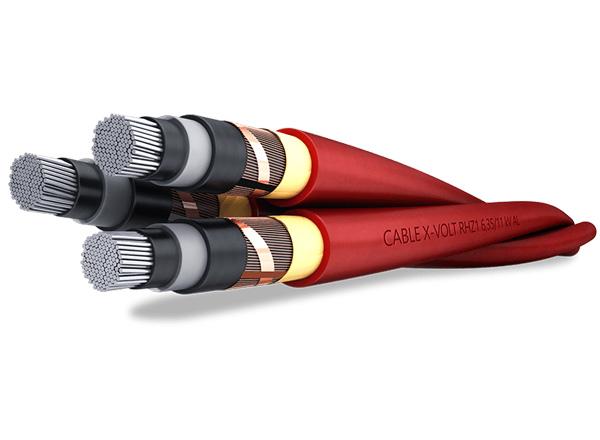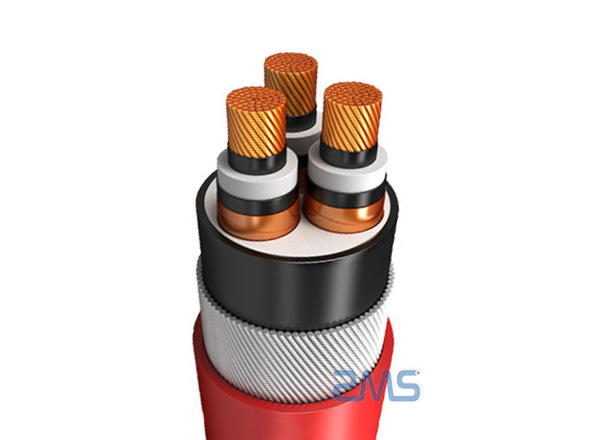Although there are many varieties of cross-linked insulation, they are mainly divided into two categories: physical and chemical cross-linking. The quality of the insulation is identical, so in the national standard GBl2706-91, there is no distinction between the cross-linking methods used.
Cross-linked insulation has been dominant in power cables, replacing oil-paper insulation, and gradually replacing PVC plastic insulation. Although there are many varieties of cross-linked insulation, it is mainly divided into two categories: physical and chemical cross-linking, and its insulation quality is completely consistent. Therefore, in the national standard GBl2706-91, no distinction is made as to which cross-linking method is used.

Physical cross-linking
Physical cross-linking, also known as irradiation cross-linking, has the best insulation quality, high cross-linking, and good weather resistance. And it is the ideal process method for various soft wires, equipment lines, high-temperature resistance (105c and above), and flame retardant wires and cables. Its main drawback is that irradiation is not uniform. The production of repeated irradiation, cable bending too many times, and insulation are easy to inject space charge, not quite suitable for power wire production. Some companies use irradiated wire production of some small cross-section aluminum-core cable and 1-l0kV aluminum-core overhead cable, the problem is not too big.
Chemical cross-linking
Chemical cross-linking of high and low-temperature cross-linking methods, including high-temperature cross-linking and steam and dry cross-linking two. Steam cross-linking has been eliminated due to the moisture content of, 2000×10-6 in the insulation, the insulation quality is not good. Dry cross-linking insulation moisture content (100-200) x 10-6, has been widely used in the l0-500kV cable. Low temperature cross-linking, the scientific name of silane cross-linking, cable in 70℃-90℃ warm water cross-linking, but also in the humidity of the air, so also known as warm water cross-linking. The cross-linking agent (silane) absorbs water to make the linear structure of PE insulation react into a net-like cross-linked structure. The absorbed water has become part of the insulation molecules, so the moisture content is minimal, also (100-200)x10-6, and the insulation quality is the same as dry cross-linking, and the insulation performance also exceeds that of Ü-fa cross-linking. Warm water cross-linking is not easy to penetrate the thicker PE insulation, and is generally suitable for cables up to 10kV, especially for 1kV warm water cross-linked cables.
Warm water cross-linked cable, good product quality, low investment in equipment, fast production speed, is the most ideal cable products, procurement of cable, should be familiar with more product knowledge, to get quality products.

Procurement and selection of cross-linked cables
Cross-linked cable insulation quality is high, its frequency breakdown strength up to 50kV/mm, tan6 only 5 x10-4, the dielectric constant of 2.3, is the most ideal cable insulation. At the same time, the working temperature of cross-linked cable is up to 90c, with good heat and weather resistance, and high mechanical properties and chemical properties such as corrosion resistance. The low and medium cable products have all cross-linked cables. Although the process of cross-linked cables is different, the insulation quality is identical. Now the different types of cables commonly used for the selection of the following.
(1) 1kV three-core aluminum core 70 mm cross-linked polyethylene insulation PVC sheath steel belt pinning cable, model YJLV22-0.6/1KV, 3 x 70. The model of cross-linked insulation (YJ) can be used in any kind of cross-linking process, but the use of warm water cross-linking is the best. Such as the use of dry cross-linking, significant investment in equipment, and slow production speed. In addition, if the cable cross-section is even smaller, it will pull the cable thin or break into a huge production line. If irradiated cross-linking is used, the tightly compressed conductor of the cable will be damaged due to too many cable bends, and the tightly compressed copper conductor will be more easily damaged. The procurement should take into account: the smaller cross-section of the aluminum core, the cable should never use dry cross-linking. For larger cross-section or copper-core cables that can not use amplitude cross-linking, warm water cross-linking will have greater flexibility.
(2) 10kV three-core copper core 120 mm cross-linked polyethylene insulation PVC sheath steel strip pinning cable, model YJV22-8.7/10kV, 3 × 120. 10kV grade cable cross-sections are generally larger, the especially copper-core cable is not an irradiated cross-linking process. Unless the cable is bent too many times, easy to damage the cable and the insulation in the set of accumulated space charges to degrade the quality of insulation. 10kV grade cable is currently the most suitable dry cross-linking production process, product quality and stability, reasonable prices. However, if the cable batch is small and the specifications change a lot, the scrap rate of dry cross-linking is very high, and it is easy to pull off a very small cross-section of the cable. This should be used to warm water cross-linking. Warm water cross-linking is a low-temperature cross-linking category, with no insulation heat stress, or insulation quality, to eliminate the misconception that warm water cross-linking “must contain water”. With the development of new materials for warm water cross-linking, in the field of low-voltage cables, more good prospects for development.
(3) 10KV aluminum core 70 mm overhead insulated cable, model JKLYJ-6/10kV, 1×70. This type of cable is also three processes are in production, using the amplitude of the cross-linking process of enterprises. After grounding the cable conductor for a long time to eliminate space charge, the cable can be safely used on overhead cable lines with semi-insulated systems. The comparison between the use of dry cross-linking and warm water cross-linking is consistent with the production of 10 kV cables above.
